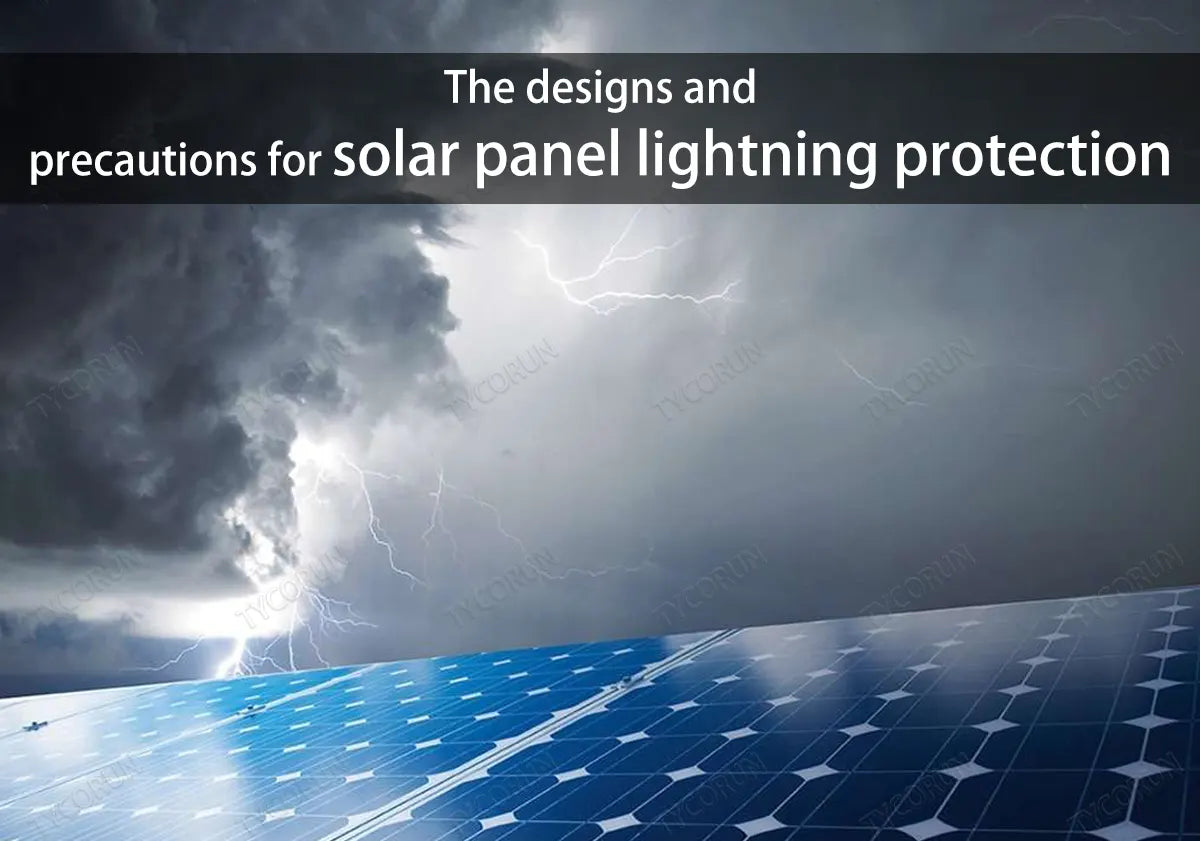
As the scale of solar solar panel and the scope of applications continue to expand, solar panel lightning protection and grounding protection measures are increasingly valued in large and small solar panel systems.
Especially in seasons with frequent thunderstorms, photovoltaic power stations are prone to lightning strikes, causing equipment damage and system failure to operate normally. Therefore, the design for solar panel lightning protection is also a key factor affecting the long-term stable, safe, and reliable operation of solar panel systems.
Main content:
1. The harm of lightning to solar panel systems
- Harm to photovoltaic modules:
Photovoltaic modules are the core part of solar panel systems. They are mostly installed on outdoor rooftops or in open areas. These locations are extremely vulnerable to the impact of direct lightning strikes with strong pulse currents, blazing high temperatures, and violent electric power, causing battery damage.
Failures such as bypass diode breakdown, cell breakdown, and line burnout inside the component junction box make it impossible for some square arrays to generate electricity or the entire power generation system will be paralyzed.
- Harm to photovoltaic controllers:
When the photovoltaic controller is damaged by lightning or overvoltage, the following situations will occur:
① The charging system keeps charging, but the discharging system does not discharge, causing the battery to remain in a charging state. Overcharging can shorten the service life of the battery and reduce the capacity, or cause the battery to explode, causing damage to the entire system and casualties.
② The charging system is not charging, but the discharge system is always in a discharge state, and the battery cannot store electrical energy. As a result, the device can work normally when there is sunlight, but cannot work when there is no sunlight or the light is not strong.
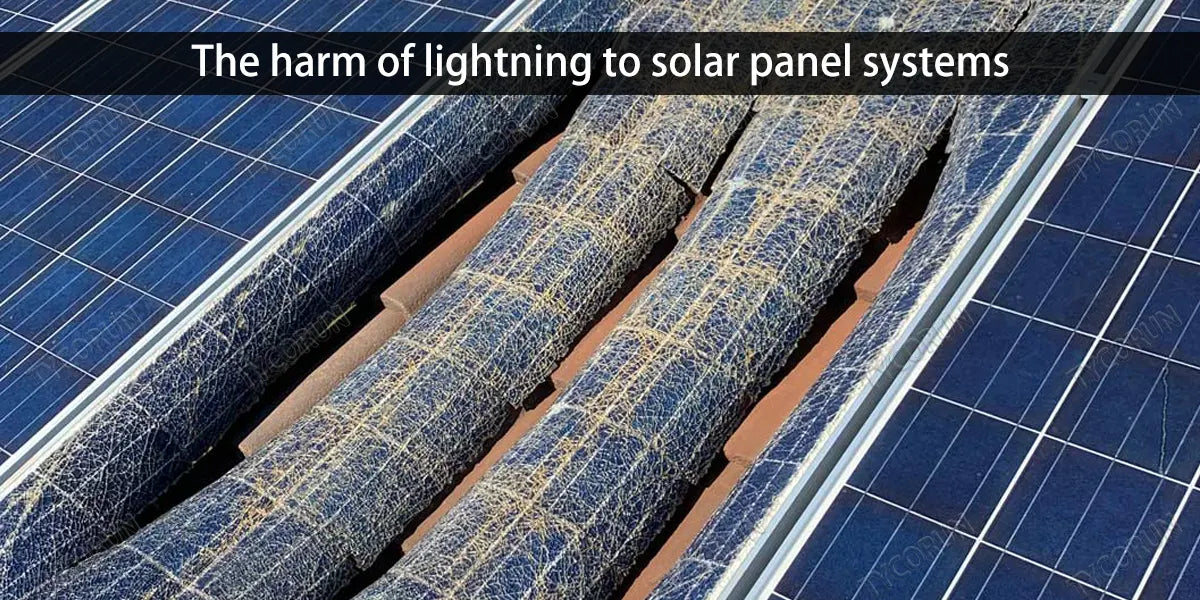
- Harm to batteries:
When the system suffers a lightning strike and overvoltage invades the battery, it may damage the battery, especially LFP battery, shorten the battery life, and reduce the battery capacity, or cause the battery to explode, causing serious economic losses and casualties.
- Harm to the inverter:
If the inverter, such as 2000w pure sine wave inverter or 3000w inverter, is damaged by lightning strike, the following situations will occur:
① There is no voltage input to the user load, and the electrical equipment cannot work.
② When damaged, even the best solar inverter cannot invert the voltage, causing the DC voltage generated by the photovoltaic module to be directly used by the load. If the output voltage of the photovoltaic module is too high, the electrical equipment may be burned.

2. The designs for solar panel lightning protection
When designing lightning protection photovoltaic power stations for solar photovoltaic grid-connected power generation systems, you must first consider erecting lightning rods to ensure solar panel lightning protection from direct lightning strikes. At the same time, you must also consider preventing lightning induction and lightning waves from intruding into the solar panel system.
When photovoltaic equipment is placed on top of a building that has already built an external solar panel lightning protection system, the original external solar panel lightning protection system should be taken into consideration. If the photovoltaic equipment is within the protection range, there is no need to install an external solar panel lightning protection system; otherwise, an external lightning protection system is required.
Good grounding reduces the grounding resistance, so that lightning current can be introduced into the earth and reduce the ground potential. Each grounding device must be connected to each other through a grounding bar to achieve a common ground and prevent ground potential counterattack.
Independent lightning rods should be equipped with independent centralized grounding devices, and the grounding resistance must be less than 10Ω. Fixed metal supports are connected to the grounding system approximately every 10m.
The solar photovoltaic power generation equipment and the building's grounding system are connected to each other through galvanized steel, and the welding joints must also be treated with anti-corrosion and anti-rust treatment. This can not only reduce the total grounding resistance, but also form an equal network through the interconnected grounding system, significantly reducing the overvoltage generated by lightning between wires.
3. Material selection for lightning protection grounding
- Lightning rod:
Generally, round steel with a diameter of 12-16mm is used. If a lightning strip is used, a round steel with a diameter of 8mm or a flat steel with a thickness of 4mm is used. The height of the lightning rod above the object to be protected should be greater than or equal to the horizontal distance from the lightning rod to the object to be protected. The higher the lightning rod, the greater the protection range.
- Grounding body:
The grounding body should be made of hot-dip galvanized steel. Its specifications are generally: 50mm diameter steel pipe, wall thickness not less than 3.5mm; 50*50*5 angle steel or 40*4 flat steel, generally 1.5-2.5m in length. The grounding body must be buried to a depth of not less than 0.5m, and the welded connections must be re-processed for anti-corrosion and anti-rust treatment.
- Down conductor:
Round steel is preferred for the down conductor, with a diameter of not less than 8mm; if flat steel is used, the cross-sectional area should be not less than 4mm²; for higher requirements, double-layer insulated multi-stranded copper wire with a cross-sectional area of 35mm² should be used.

4. Layout of external lightning protection system
If photovoltaic equipment is installed on the roof surface of a building that already has an external solar panel lightning protection system and an isolation distance is maintained, the existing external lightning protection system should be taken into consideration. For this reason, photovoltaic equipment must be installed within the protected zone of an external lightning protection system to avoid direct lightning strikes.
For example, solar panels can be protected from direct lightning strikes by using appropriate solar panel lightning protection devices (e.g. lightning rods). The arrangement of lightning rods must be such that photovoltaic modules placed within the protected space formed can avoid direct lightning strikes, and secondly, any shadows must be prevented from being cast onto the solar panels.
And please notice that a separation distance must be maintained between photovoltaic modules and metal parts (such as solar panel lightning protection devices, rain gutters, skylights, off grid solar batteries or antenna systems) in accordance with IEC 62305-3 (EN 62305-3). The isolation distance is calculated according to IEC 62305-3 (EN 62305-3).
For buildings that have external lightning protection systems but do not maintain isolation distances, in order to maximize economic profits, the entire roof is usually covered with solar panels. However, from the perspective of installation technology, it is often not possible to maintain the required separation distances. A direct equipotential bonding between the external lightning protection system and the metal PV modules must therefore be established at these locations.
In this case, the risk of lightning current intrusion into the DC bus inside the building must be considered, and therefore reasonable equipotential bonding must be carried out. All conductive parts entering the building from the outside need to be connected to the equipotential bonding system: all non-live metal parts are directly connected to the equipotential system, and live parts are connected indirectly through the installation of surge protectors into the equipotential bonding system.

5. Precautions for solar panel lightning protection grounding
- Component frame grounding
Many people think that components and brackets are both metal bodies and are in direct contact with each other. As long as the bracket is grounded, there is no need to build components. In fact, the aluminum frame of the module and the galvanized bracket or aluminum alloy bracket are all plated, which cannot meet the grounding requirements. Only when the grounding hole of the module is connected to the bracket can the module be effectively grounded.
Generally speaking, the grounding holes of components are used for connection between strings, and the component grounding holes at both ends of the strings are connected to metal brackets. The aging of components may cause excessive leakage current or low insulation impedance to ground. If the frame is not grounded, the system may not be able to generate electricity normally in the future.
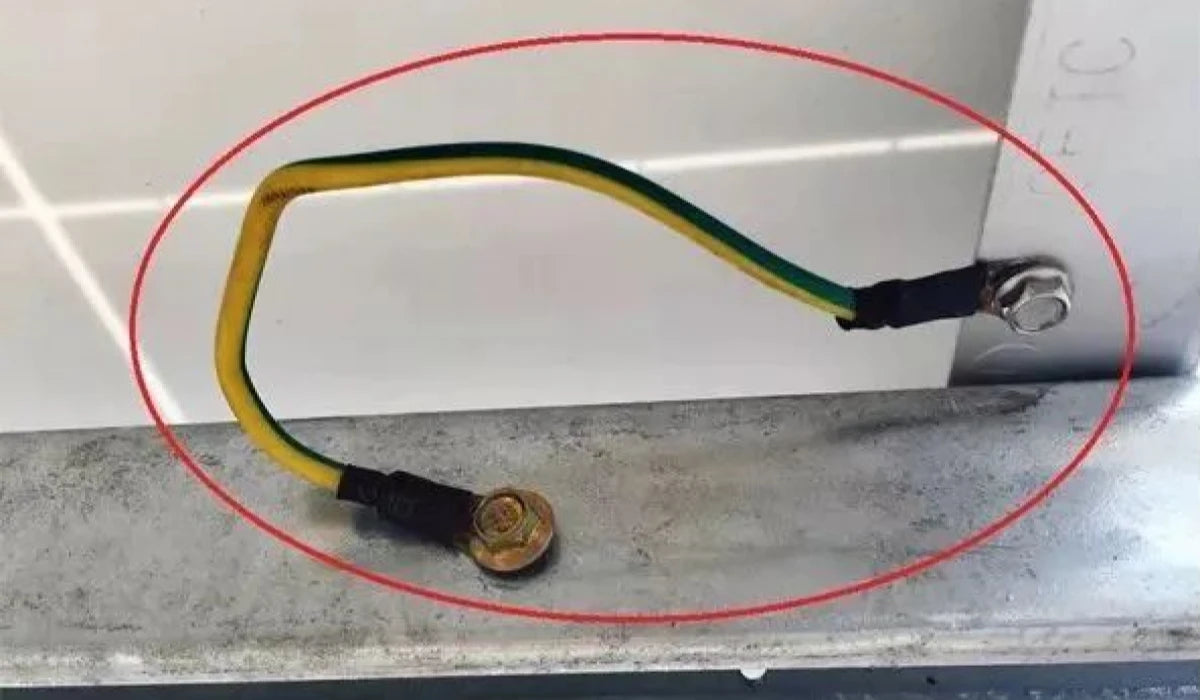
- Component bracket grounding
For the grounding of modules, 40*4mm flat steel or φ10 or φ12 round steel is generally used, and finally buried underground at a depth of 1.5m. The grounding resistance of photovoltaic modules is required to be no more than 4Ω. For those that cannot meet the grounding resistance requirements, usually use resistance-reducing agent or choose a place with low soil content to bury it.
- Inverter grounding
① Work grounding: Generally, the working ground (PE end) is connected to the PE bar in the distribution box, and then grounded through the distribution box.

② Protective grounding: There is a grounding hole on the right side of the inverter body for repeated grounding to protect the safety of the inverter and operators.
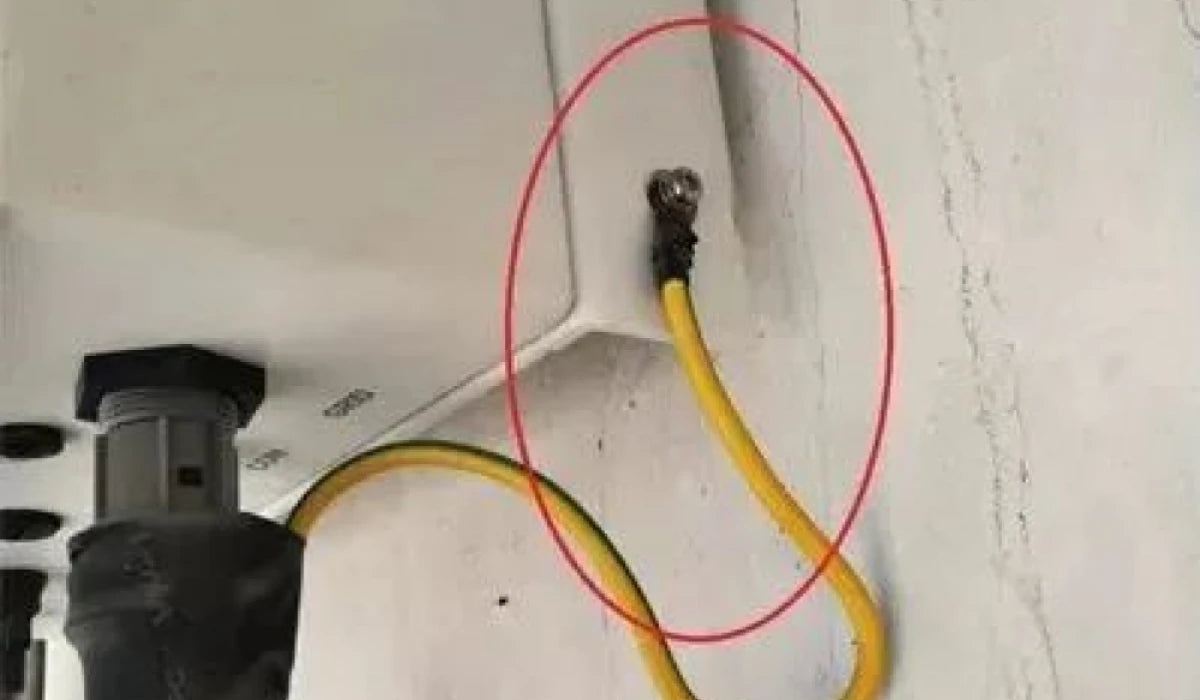
- Distribution box side grounding
① Lightning protection grounding: AC side lightning protection generally consists of a fuse or circuit breaker and a lightning surge protector. It mainly protects against induced lightning or direct lightning or other instantaneous overvoltage surges. The lower end of the SPD (surge protector) is connected to the ground bar of the distribution box.
② Cabinet grounding: According to the quality standards for construction projects, the metal frames and basic steel of cabinets, screens, tables, boxes, and panels must be reliably grounded (PE) or zeroed (PEN); openable doors equipped with electrical appliances should be connected with yellow-green copper wire between the ground terminals of the door and the frame.
Jumper wires should be used between the cabinet door and cabinet body of the distribution box to ensure reliable grounding.
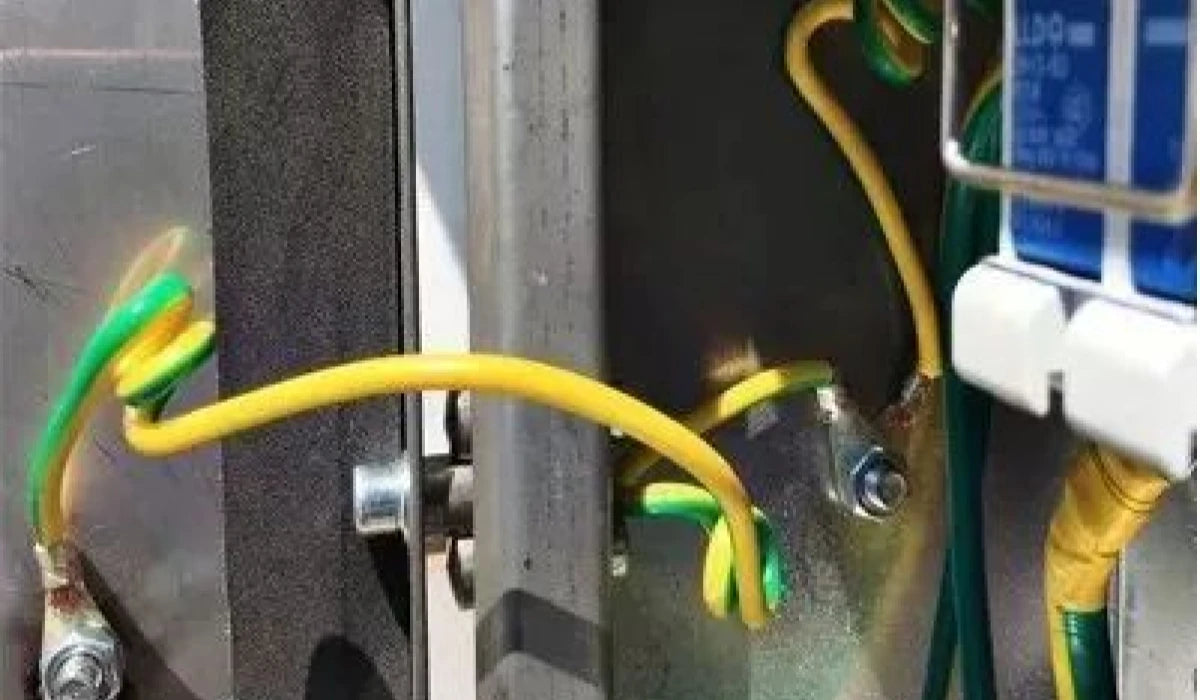
- Surge protection:
This is achieved by installing surge protectors on live cables to reduce damage to equipment caused by surges and lightning overvoltages. In addition to the solar cell array, the lightning surge intrusion pathways of the solar photovoltaic grid-connected power generation system also include distribution wires, and grounding wires, etc.
- Fuse:
As the backup protection of the surge protector, the fuse should be located at the front end of the surge protector branch to protect against overcurrent, and its breaking capacity should be equal to or greater than the expected short-circuit current at the installation site.
Related posts: 12V 6ah lithium ion batteries, lawn mower battery, 18650 battery
















